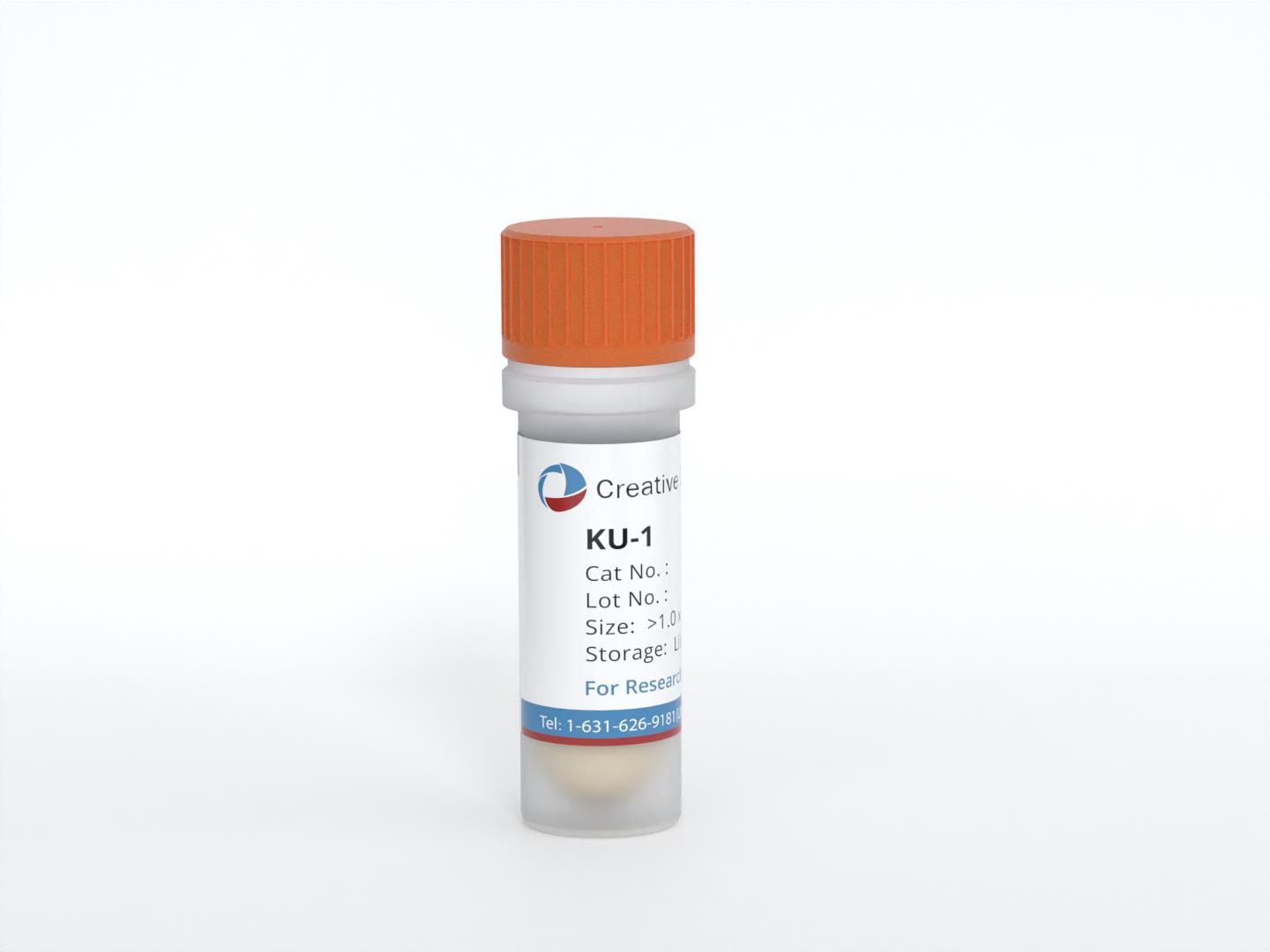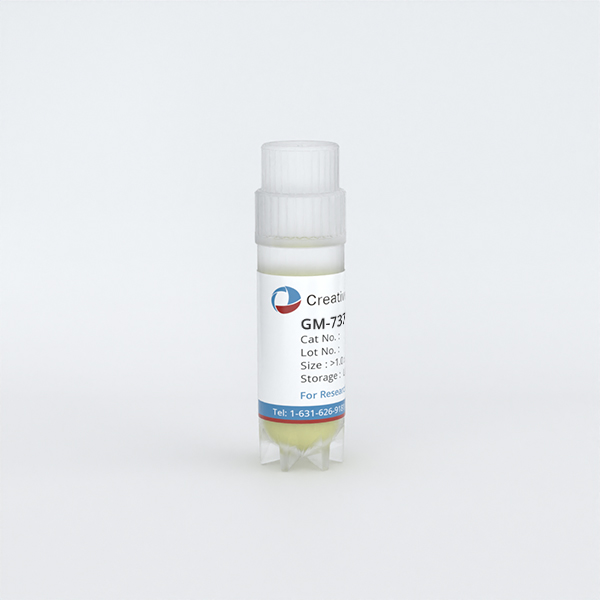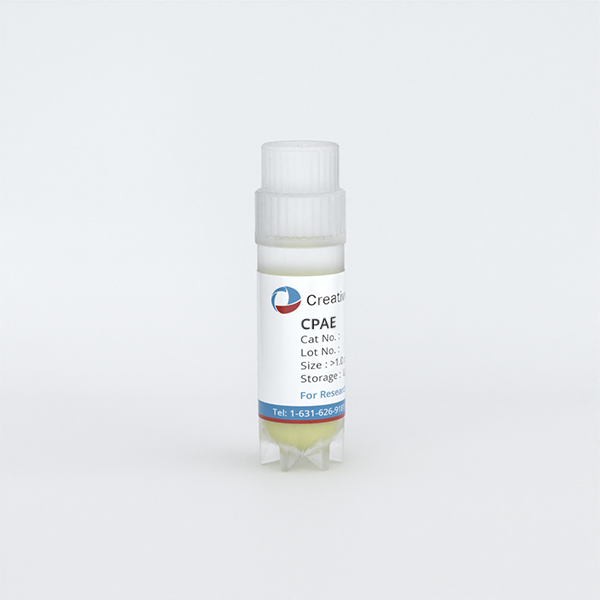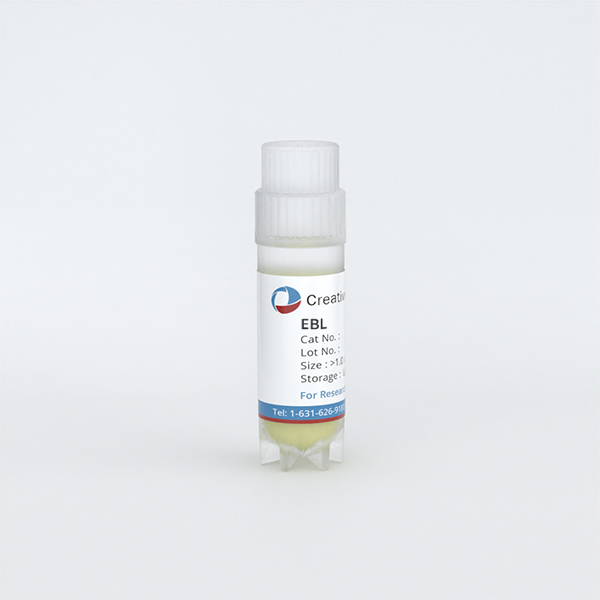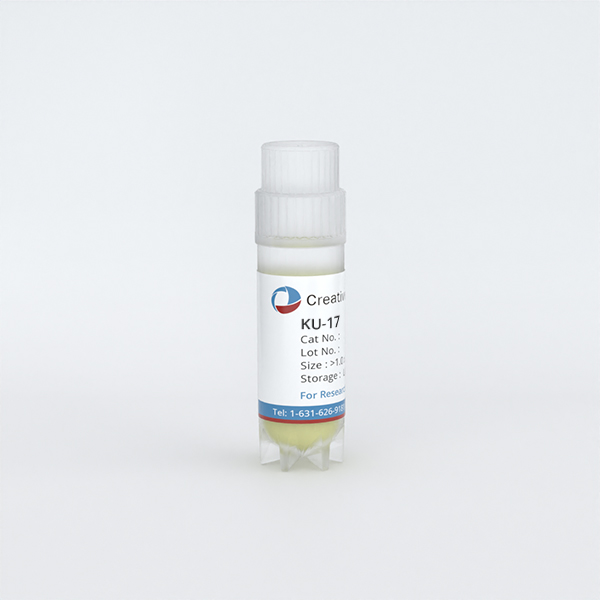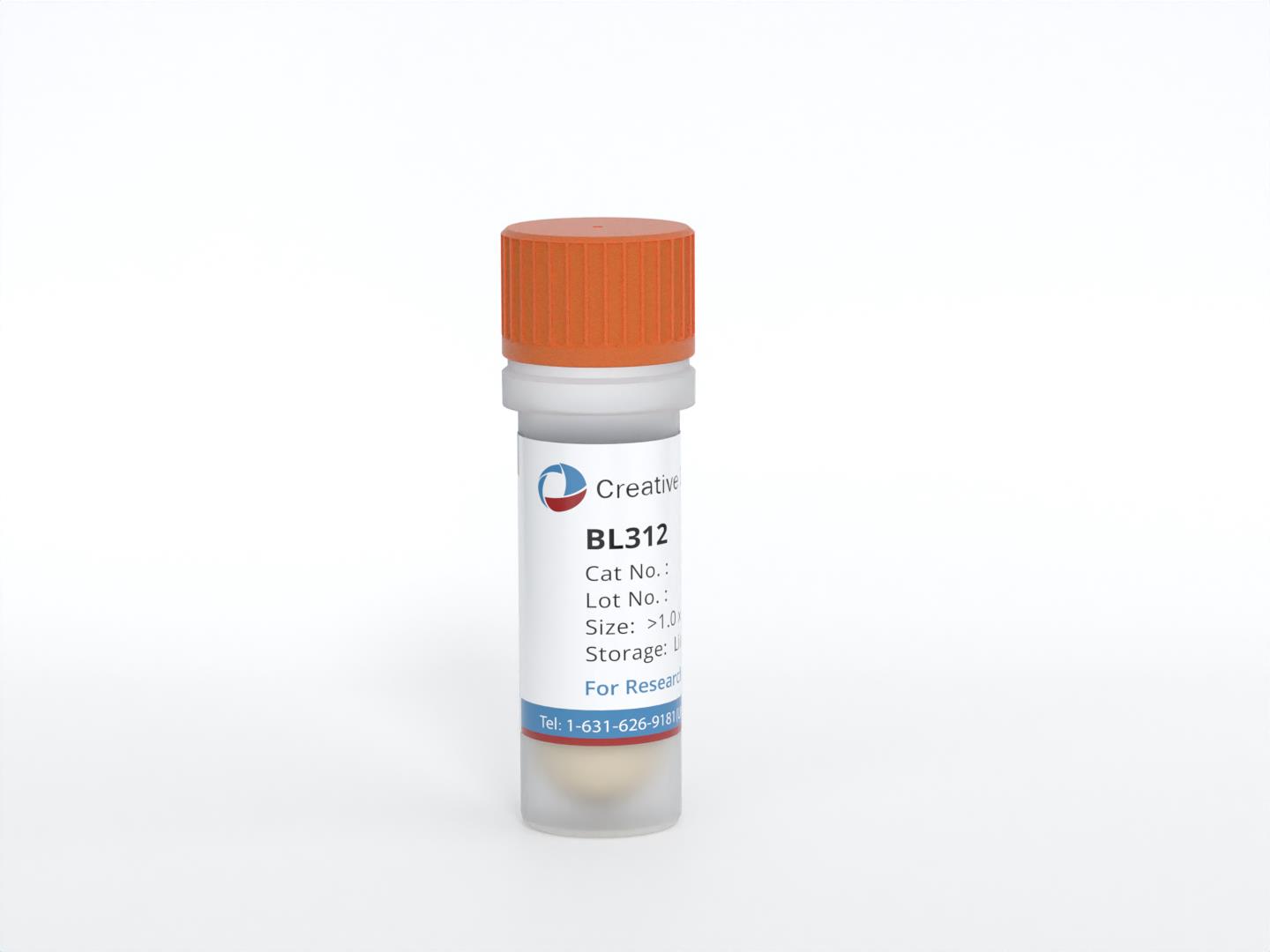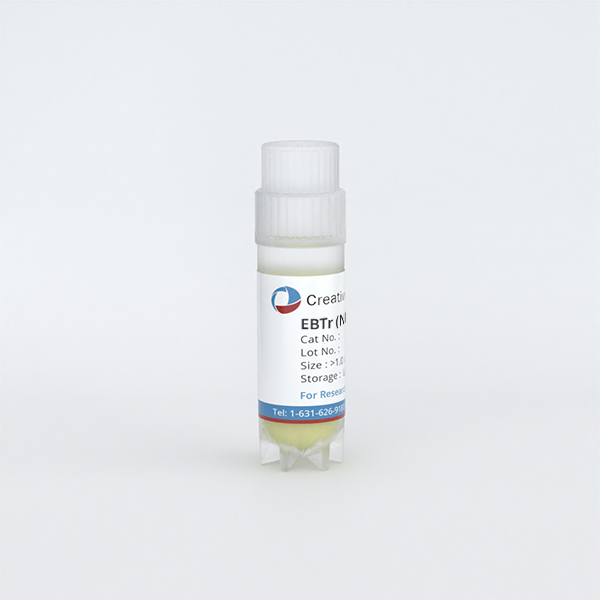
EBTr (NBL-4)
Cat.No.: CSC-C9375L
Species: Bos taurus (Bovine)
Source: Fetus; Trachea
Morphology: fibroblast
Culture Properties: monolayer
- Specification
- Background
- Scientific Data
- Q & A
- Customer Review
Strain: Bos taurus
Virus Susceptibility: bovine viral diarrhea; infectious bovine rhinotracheitis; parainfluenzavirus 3; herpes simplex; reovirus 3; vesicular stomatitis (Oghen); vaccinia
Virus Resistance: human adenovirus 5; poliovirus 2; coxsackievirus A9, B5
EBTr (NBL-4) is a bovine tracheal epithelial cell line. As a type of epithelial cell, in vitro, the cell lines have typical epithelial cell morphology, have defined intercellular junctions and polarized organelles. It is also able to functionally express typical physiological processes of natural tracheal epithelium, such as barrier, ion transport, and innate immune functions. EBTr cells have been found to have an appreciable ability to take up and metabolize certain drug molecules, including norepinephrine. These cells share similar drug uptake properties with cardiomyocytes but their modified binding affinity and sensitivity to inhibitors render them effective for drug transport and metabolism research.
As a natural bovine respiratory epithelial cell line, EBTr cells have significant potential to be used in studies of bovine respiratory disease pathogenesis (such as Mycoplasma infection) and host-pathogen interactions. Because of their maintained respiratory epithelial characteristics and sensitivity to a wide range of respiratory pathogens, this cell line is a key tool in veterinary and comparative medicine. It has been particularly instrumental in the development of bovine respiratory disease models and drug screens.
Invasion Rates of Four Mycoplasma Strains into EBL, MDBK, BT and EBTr Cells
Mycoplasma bovis (M. bovis) is an emerging and economically important pathogen in the cattle industry. It is responsible for a variety of diseases such as pneumonia, arthritis, and mastitis in cattle. M. bovis can invade non-phagocytic cells, which is important for immune evasion and dissemination in the host. Li's team investigated the invasion mechanism of M. bovis into four types of non-phagocytic cells and quantify the invasion rates of different strains.
The invasion rates of the three strains of M. bovis (PG45, 07801, 08M) was determined by the plate counting method. The invasion rate of PG45, 08M, and 07801 into EBTr cells was the highest among all cells (EBL, MDBK, BT), and the BT cells was the lowest. The invasion efficiency of EBTr was significantly higher than that of MDBK cells, while it was not significantly higher than that of EBL cells (Fig. 1A–D). PG45 and PG45-GFP showed identical invasion rates across all cell types as GFP addition did not influence the invasion rate (Fig. 1A and D). PG45, 08M, and 07801 could all invade multiple non-phagocytic cells, with 07801 having a slightly weaker ability to invade cells than PG45 and 08M.
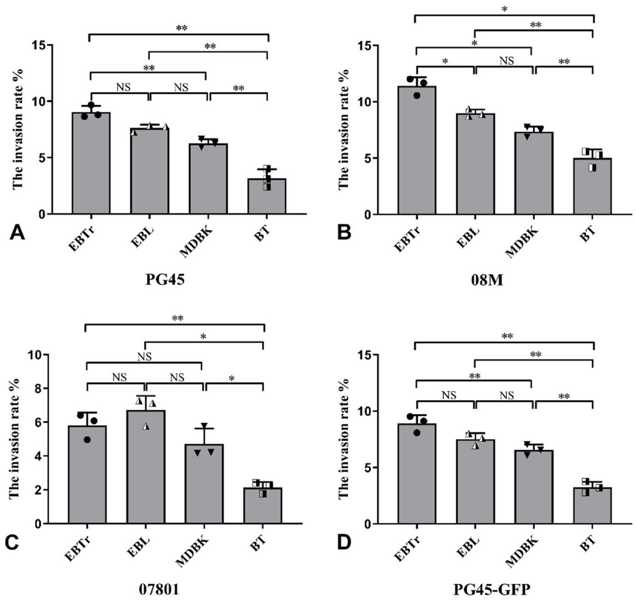
Protective Effects of N-Acetylcysteine on Lipopolysaccharide-Induced Respiratory Inflammation and Oxidative Stress
Lipopolysaccharide (LPS) is the main component of the cell wall of gram-negative bacteria and a strong inducer of inflammation and oxidative stress. N-acetylcysteine (NAC) is an acetylated derivative of L-cysteine that reportedly has anti-inflammatory and antioxidant properties. Chen's group examined the protective effects and the underlying mechanisms of NAC on LPS-induced respiratory inflammation and oxidative stress in bovine embryo tracheal cells (EBTr) and mouse models of acute lung injury (ALI).
EBTr cell viability was inhibited by 16 μg/mL LPS but not by 0–8 μg/mL LPS (Fig. 2A), showing that LPS at concentrations lower than 8 μg/mL had no effect and could be used for further study. Cell viability was also inhibited by 5 mM NAC (Fig. 2B), but not by 0–1 mM NAC. These results show that the selected concentrations of LPS and NAC do not affect EBTr viability. IL-6 and IL-8 secretion peaked at 6 h of LPS treatment (Fig. 3). Expression of IL-6 and IL-8 also peaked at 6 h. HO-1, Nrf2, and NQO1 mRNA levels also changed significantly at 6 h of LPS treatment. These results demonstrate that 6 h is an appropriate incubation period to induce oxidative stress and inflammation. Pretreatment with 1 mM NAC rescued changes in HO-1, Nrf2, and NQO1 mRNA levels and downregulated LPS-induced IL-6 and IL-8 expression and secretion after 6 h.
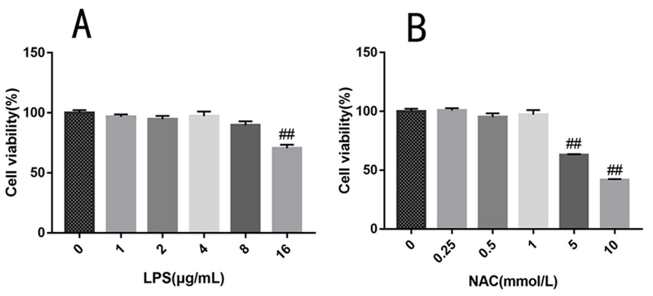
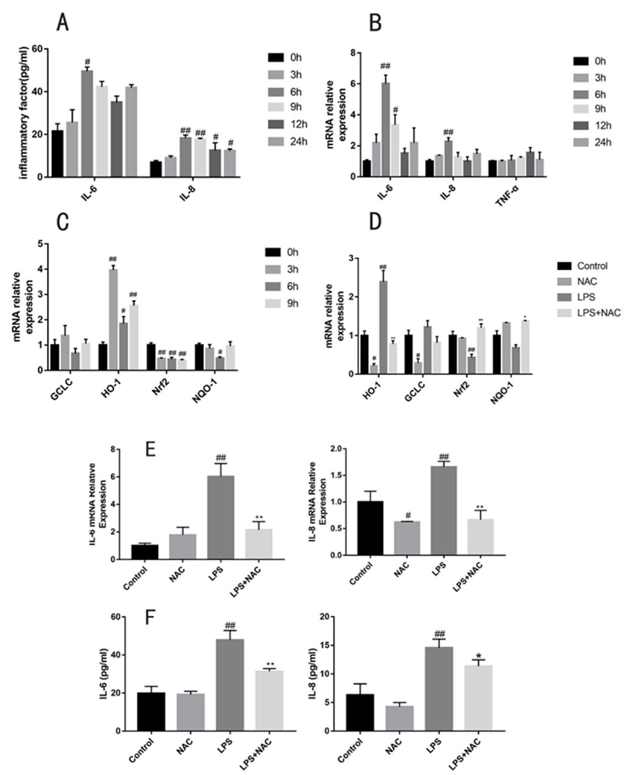
Ask a Question
Write your own review
- You May Also Need
- Adipose Tissue-Derived Stem Cells
- Human Neurons
- Mouse Probe
- Whole Chromosome Painting Probes
- Hepatic Cells
- Renal Cells
- In Vitro ADME Kits
- Tissue Microarray
- Tissue Blocks
- Tissue Sections
- FFPE Cell Pellet
- Probe
- Centromere Probes
- Telomere Probes
- Satellite Enumeration Probes
- Subtelomere Specific Probes
- Bacterial Probes
- ISH/FISH Probes
- Exosome Isolation Kit
- Human Adult Stem Cells
- Mouse Stem Cells
- iPSCs
- Mouse Embryonic Stem Cells
- iPSC Differentiation Kits
- Mesenchymal Stem Cells
- Immortalized Human Cells
- Immortalized Murine Cells
- Cell Immortalization Kit
- Adipose Cells
- Cardiac Cells
- Dermal Cells
- Epidermal Cells
- Peripheral Blood Mononuclear Cells
- Umbilical Cord Cells
- Monkey Primary Cells
- Mouse Primary Cells
- Breast Tumor Cells
- Colorectal Tumor Cells
- Esophageal Tumor Cells
- Lung Tumor Cells
- Leukemia/Lymphoma/Myeloma Cells
- Ovarian Tumor Cells
- Pancreatic Tumor Cells
- Mouse Tumor Cells
